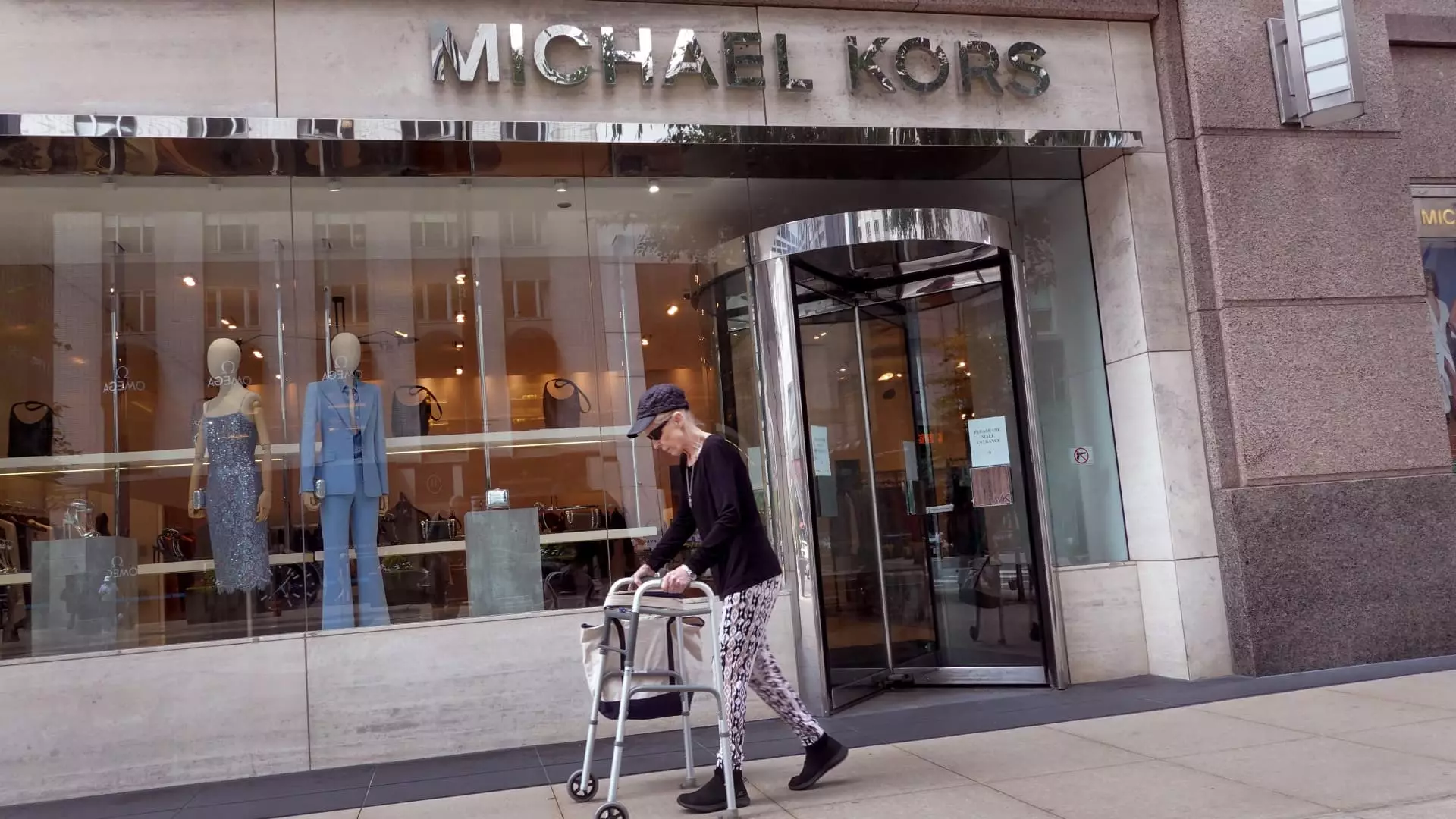The anticipated merger between two luxury giants, Capri Holdings and Tapestry, came to an abrupt halt on Thursday, largely due to intervention by the Federal Trade Commission (FTC). The decision underscores not just the challenges faced by corporate giants when merging but also highlights the increasingly vigilant watchdog nature of regulatory bodies, particularly concerning competitive markets. The announcement of the shutdown of what was originally an $8.5 billion acquisition has sent shockwaves through the luxury fashion industry, prompting stakeholders to reevaluate their strategies in a rapidly evolving market landscape.
In their official statement, Capri and Tapestry acknowledged that mutual agreement to terminate the merger was the most prudent course of action. With the regulatory approval timeline looming—set to expire in February—both companies recognized the improbability of overcoming FTC objections before the deadline. Capri’s CEO, John Idol, articulated a forward-looking vision that dispelled the notion that this merger was the sole pathway to prosperity. Instead, he expressed confidence in Capri’s long-term growth potential, emphasizing that the company would pivot toward the future of its three iconic brands: Versace, Jimmy Choo, and Michael Kors.
The FTC initially intervened in April, contending that the merger could stifle competition and diminish employee benefits. Subsequent judicial rulings further substantiated these claims and resulted in a preliminary injunction that blocked the merger. Whereas the proponents of the merger likely encountered significant hurdles, their inability to garner approval from necessary regulatory bodies suggests that the cost-benefit analysis may not have been favorable, despite initial optimism about combined market strength.
Financial Ramifications
As the dust settles, both companies are recalibrating their strategic priorities. Tapestry has publicly declared its intent to redirect resources toward substantial growth initiatives, with plans to initiate a $2 billion share repurchase authorization. This maneuver indicates a broader trend in which volatility resulting from failed mergers can lead to renewed focus on organic growth. CEO Joanne Crevoiserat stated that Tapestry always had multiple avenues to maintain growth, indicating that even without the merger, the company remains poised for progress.
Interestingly, Tapestry’s financial recovery has already begun to take form, with a notable uptick in share prices post-announcement. Conversely, Capri experienced a significant decline, with investors showcasing a cloud of uncertainty about the brand’s future and its longstanding challenges, particularly with the struggling Michael Kors line. In the fashion industry, consumer sentiment can pivot dramatically based on corporate decisions, leading to sharp fluctuations in stock performance.
Strategic Shifts Ahead
In light of the failed merger, both companies are tasked with shifting their focus in the coming months. For Capri, the need to reestablish brand desirability is paramount. John Idol hinted at strategic initiatives underway to rejuvenate the brand portfolio. Key areas for improvement include strengthened customer engagement, innovative marketing strategies, and a seamless omni-channel consumer experience. The emphasis on compelling products and enhanced communication reveals an acute awareness of the competitive pressures that luxury brands face in a digital age where consumer preferences rapidly evolve.
For Tapestry, the potential to accelerate growth through its own organic pathways suggests a sustainability approach that is vital for long-term viability. This pivot away from acquisitions, at least for the foreseeable future, could empower Tapestry to develop unique brand narratives and marketing approaches tailored to its existing luxury houses, including Coach and Kate Spade.
Ultimately, this episode serves as a critical reminder of the intricacies of corporate mergers and acquisitions within the luxury fashion sector. The failed collaboration of Capri and Tapestry highlights the importance of regulatory oversight to ensure fair competition and consumer protection. As the luxury landscape continues to shift, industry watchers will undoubtedly assess how these two companies adapt and survive in a post-merger reality, not merely as competitors but as key players navigating the complexities of a market shaped increasingly by consumer demand, technological innovations, and evolving regulatory frameworks.
In the end, while the dream of an unrivaled mega-entity in the luxury sector may dissipate, the paths carved out by Capri and Tapestry will likely lead to twists and turns—each laden with opportunity, challenge, and the relentless pursuit of growth and influence in a dynamic marketplace.

